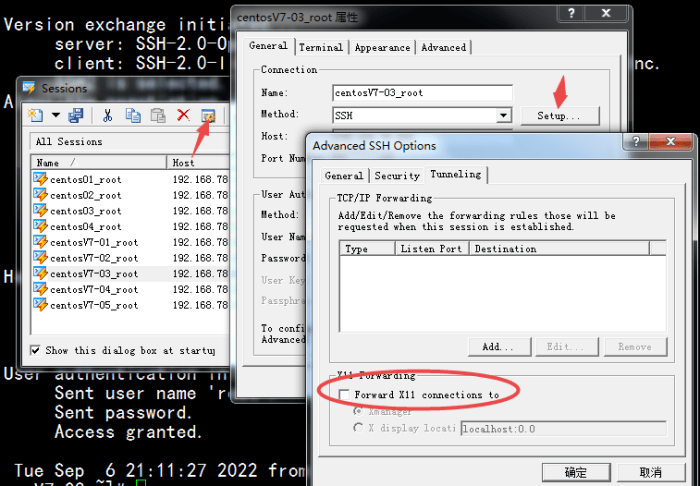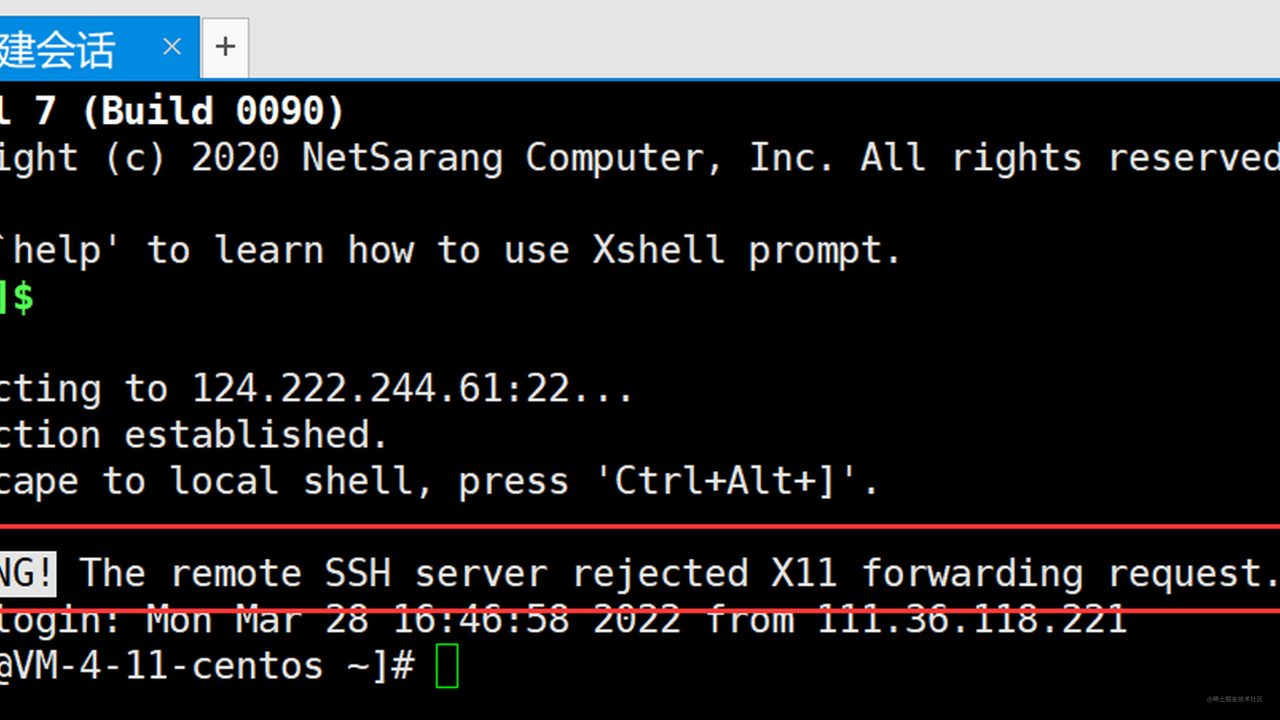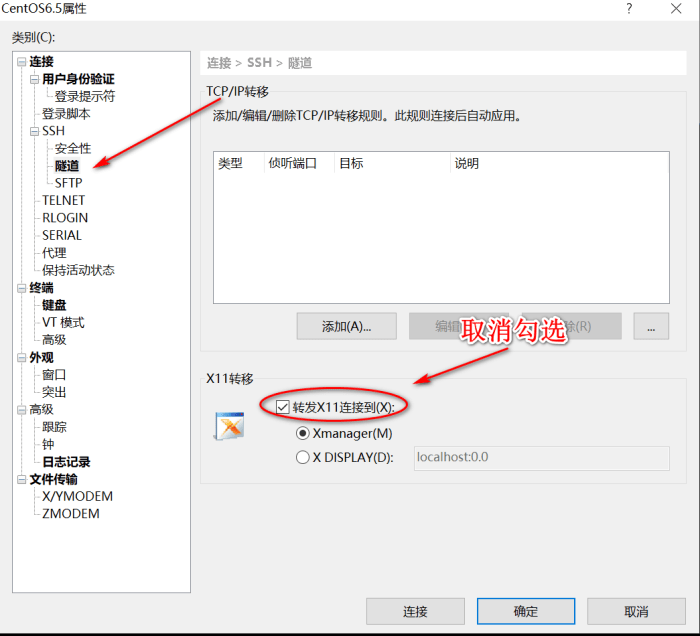When working with remote servers, X11 forwarding is a powerful tool that allows you to seamlessly display graphical applications on your local machine. However, sometimes you may encounter the frustrating error message “the remote ssh server rejected x11 forwarding request.”
This guide will delve into the causes of this error, provide step-by-step troubleshooting tips, and explore alternative solutions for accessing graphical applications remotely.
X11 forwarding establishes a secure channel between your local X server and the remote SSH server, enabling the display of graphical applications running on the remote server on your local desktop. However, various factors, such as firewall restrictions, SSH configuration settings, and security considerations, can lead to X11 forwarding being rejected.
Introduction
The error message “the remote ssh server rejected x11 forwarding request” indicates that the SSH server has denied your request to forward X11 traffic over the SSH connection. X11 forwarding is a feature of SSH that allows you to display graphical applications running on the remote server on your local computer.
Purpose of X11 Forwarding
X11 forwarding is useful for running graphical applications on a remote server without having to install a graphical environment on the local computer. This can be useful for running applications that require a lot of graphical resources, such as CAD or video editing software.
Causes of the Error
The SSH server may reject X11 forwarding requests due to several factors. These include:
SSH Configuration Settings
The SSH configuration file (/etc/ssh/sshd_config) contains settings that control X11 forwarding. The following settings are relevant:
- X11Forwarding: Enables or disables X11 forwarding.
- X11DisplayOffset: Specifies the starting display number for forwarded X11 connections.
- X11UseLocalhost: Restricts X11 connections to the local host.
Troubleshooting Steps
To troubleshoot the error “remote ssh server rejected x11 forwarding request,” follow these steps:
First, check your SSH configuration files. Make sure that X11 forwarding is enabled on both the client and server side.
Checking SSH Configurations
- On the client side, check the ~/.ssh/config file.
- Look for the ForwardX11 line. It should be set to yes.
- On the server side, check the /etc/ssh/sshd_config file.
- Look for the X11Forwarding line. It should be set to yes.
If X11 forwarding is enabled in both the client and server configuration files, then check your firewall settings.
Checking Firewall Settings
- Make sure that the firewall is not blocking the X11 forwarding port (TCP port 6000).
- You can use the netstat command to check if the port is open.
Enabling X11 Forwarding
X11 forwarding allows you to remotely display graphical applications on your local computer while running them on the SSH server. To enable this, you need to configure both the SSH server and client.
SSH Server Configuration
On the SSH server, edit the SSH configuration file (/etc/ssh/sshd_config) and add or modify the following lines:“`X11Forwarding yesX11DisplayOffset 10“`Restart the SSH server for changes to take effect.
SSH Client Configuration
On the SSH client, specify the X11 forwarding option when connecting to the server:PuTTY:
- Select “Connection”
- > “SSH”
- > “X11”
- > “Enable X11 forwarding”
OpenSSH:
Use the “-X” or “-Y” option when connecting, e.g.
“`ssh
X user@server
“`
Security Considerations
Enabling X11 forwarding allows the remote display of graphical applications on the local computer. While convenient, it introduces potential security risks, as it allows the remote server to access the local X11 server and potentially compromise the local system.
To mitigate these risks, it is crucial to implement best practices for securing X11 connections:
Best Practices
- Restrict access: Only allow trusted users to establish X11 forwarding connections.
- Use strong authentication: Implement strong authentication mechanisms, such as public-key authentication, to prevent unauthorized access.
- Enable encryption: Configure the SSH server to use encryption for X11 forwarding, ensuring the confidentiality of the transmitted data.
- Limit X11 access: Restrict the X11 forwarding capabilities to specific applications or servers to minimize the attack surface.
- Monitor connections: Regularly monitor X11 forwarding connections for suspicious activities or unauthorized access attempts.
Alternative Solutions
In cases where X11 forwarding is not feasible, alternative methods can be employed to access graphical applications on remote servers.
One common approach is to utilize remote desktop protocols such as VNC (Virtual Network Computing) or RDP (Remote Desktop Protocol). These protocols enable users to establish a graphical session on the remote server, allowing them to interact with applications as if they were running locally.
VNC
VNC operates by sending graphical updates from the remote server to the local client. It is platform-independent and can be used to connect to servers running different operating systems.
RDP
RDP is a proprietary protocol developed by Microsoft. It is primarily used to connect to Windows-based servers and provides a more seamless and optimized experience compared to VNC.
Advanced Troubleshooting

Debugging complex X11 forwarding issues requires a systematic approach. Start by examining SSH logs and network traffic to identify potential problems. Analyze SSH logs for error messages related to X11 forwarding. Inspect network traffic using tools like Wireshark to check for dropped or malformed X11 packets.
SSH Log Analysis
SSH logs provide valuable insights into X11 forwarding failures. Look for messages indicating problems with X11 forwarding, such as “X11 forwarding request failed” or “X11 forwarding disabled.” These messages often include additional details about the cause of the issue.
Network Traffic Analysis
Analyzing network traffic can help detect problems with X11 packet transmission. Use Wireshark or similar tools to capture and inspect network traffic between the SSH client and server. Look for X11 packets with errors or unexpected contents. This analysis can help identify network-related issues affecting X11 forwarding.
Cross-Platform Considerations
X11 forwarding support varies across different operating systems, affecting compatibility between clients and servers running on different platforms.
To resolve cross-platform compatibility issues, consider the following:
Windows Clients
- Windows clients typically require an X11 server, such as Xming or Cygwin/X, to enable X11 forwarding.
- Ensure that the X11 server is properly installed and configured on the Windows client.
MacOS Clients
- MacOS clients have built-in X11 support, but it may need to be enabled in the System Preferences.
- Navigate to System Preferences > Sharing > Screen Sharing and enable “Allow remote management.” This will activate X11 forwarding.
Linux Clients
- Linux clients typically have native X11 support and do not require additional software.
- Ensure that the X11 server is running on the Linux client and that the DISPLAY environment variable is set correctly.
Best Practices

To ensure optimal performance and security when managing X11 forwarding in production environments, adhere to these best practices:
Optimize network performance by ensuring sufficient bandwidth and low latency for seamless X11 traffic.
Security Considerations
- Restrict X11 forwarding to trusted clients and networks.
- Utilize SSH key-based authentication for enhanced security.
- Limit X11 forwarding to specific applications or ports.
Performance Optimization
- Enable compression to reduce network traffic and improve performance.
- Consider using a dedicated X11 server for improved scalability.
- Fine-tune X11 forwarding parameters for optimal performance.
Case Studies

Real-world scenarios can provide valuable insights into troubleshooting X11 forwarding issues and showcase successful implementations.
One notable case study involves a research team that encountered challenges with X11 forwarding while accessing a remote supercomputer. After extensive troubleshooting, they discovered a firewall misconfiguration that blocked X11 traffic. Resolving the firewall issue restored seamless X11 forwarding, allowing the team to visualize and interact with graphical applications remotely.
Success Stories and Lessons Learned
Another success story highlights the benefits of X11 forwarding in collaborative environments. A software development team used X11 forwarding to share and debug code across multiple workstations. This enabled them to visualize graphical interfaces, trace errors, and resolve issues in real-time, significantly improving their productivity and teamwork.
These case studies demonstrate the practical value of X11 forwarding and the importance of considering firewall configurations and network settings when troubleshooting connectivity issues.
Final Thoughts
Troubleshooting X11 forwarding errors requires a systematic approach, involving checking SSH configurations, firewall rules, and network connectivity. By understanding the causes of the error and implementing the troubleshooting steps Artikeld in this guide, you can effectively resolve X11 forwarding issues and access graphical applications on remote servers seamlessly.